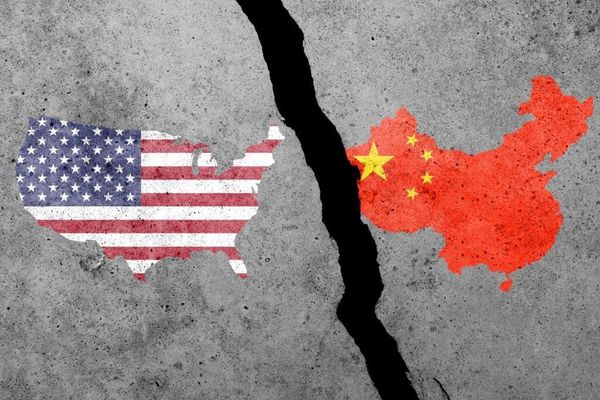
The Washington DC Auto Show has been showcasing alternative fuel vehicles for 15 years, but this is the first year an entire pavilion was dedicated to electric vehicles, or EVs. In part, you can thank the current occupant of the nearby White House for that.
If Joe Biden has his way with his ambitious $2.2tn Build Back Better plan there will be 50% zero-emission vehicles on the road by 2030. The Biden administration also has plans to convert an estimated 600,000 of its fleet to alternative fuels as part of a renewed commitment to combat climate change.
There are major issues ahead – the plan is being blocked by Republicans and there are serious equity issues to be addressed as the US transitions away from fossil fuels. But big changes are already happening, and the car show, which ends this weekend, is on it.
EVs have now been adopted on a global scale, said John O’Donnell, chief executive of the Washington DC Auto Show, and the show, which focuses on public policy and gives congressional members and auto industry leaders a space to review the latest technology, needed to reflect that.
“We’ve had other technologies and declared them a pavilion, but I thought it was very important right now for us to make it larger and more high profile,” said O’Donnell. Not just because of the current debate over EVs in Washington but also to “dispel the myth the US car dealers do not want to sell electric vehicles”.
An aggressive transition like the one Biden envisions will require an equally aggressive overhaul of infrastructure. In the bipartisan Infrastructure Investment and Jobs Act, $7.5bn is dedicated to EV-charging infrastructure and building charging stations along highway corridors. But the industry is concerned about how that money is spent.
Matthew Nelson, director of government affairs at Electrify America, said the infrastructure that serves the public must be “future-proofed”. Ultra-fast charging at 350 kW of power, or the equivalent to 20 miles of range per minute, has been his paramount message to government stakeholders.
“We think it’s really important that the chargers paid for today are able to charge faster than the vehicles on the market today,” Nelson said. “The vehicles are getting faster and faster every model year. If we design for today’s vehicles it will be outdated in five years.”
Electrify America, a sponsor of the EV Pavilion at the car show, has the largest network of DC (direct current) charging stations in the US. Currently, the Electrify America network consists of 800 charging stations, mostly along highway corridors, and the company is planning an increase to 1,800 charging stations with 10,000 chargers by 2026.
However, 500,000 charging stations are needed to meet Biden’s goals and Nelson said they should be reliable and non-proprietary. There are 31 different brands of auto manufacturers in the US that use the same non-proprietary standard for charging and Nelson said leveraging the consensus around that single standard is in the public’s interest.

Right now, consumers’ biggest concern is their bottom line, and EVs are more cost-efficient than gas-powered cars. An e-gallon – the cost to drive a comparable vehicle the same distance you could go on a gallon of gasoline – currently averages $1.16, compared with gasoline’s $2.85. Because Electrify America offers public charging their prices are a little higher than at-home chargers, but are standard in every state.
Recently, Congress amended the Public Utility Regulatory Act (Purpa) that requires each state to consider EV-specific utility rates, giving them the liberty to change rates not suited for EV adoption. These demand charges lead to “extremely high-priced” electricity being charged to the stations, making it difficult to maintain low prices. States such as Colorado, Massachusetts, California, Rhode Island and Connecticut have revised these rates, but Nelson said every state should be on board.
And there’s an equity element to charging. Homeowners who charge their cars in their garage do not pay demand rates, but those who charge at commercial charging stations or who live in multifamily dwellings or apartments will pay the demand rate.
Incentives to support EV charging infrastructure in multi-family dwellings and more community-based charging infrastructure are important tools to making EV adoption more equitable, said Kellen Schefter, director of transportation at Edison Electric Institute, which leads the National Electric Highway Coalition. He believes the biggest barrier to EV adoption is the lack of charging infrastructure that’s affordable, equitable and reliable.
Making sure investments go into those communities that are not traditionally getting those allocations is a large part of the National Electric Highway Coalition’s agenda. “There is such a great need on the infrastructure front,” said Schefter.
The right policies will be critical if Biden is to hit his EV goals. O’Donnell said a wider range of tax incentives are needed to persuade the American public to swap their fuel-dependent cars for EVs.
“In Build Back Better, they are proposing $12,500 per vehicle purchased, but only if it is built by a United Auto Worker manufacturer. It doesn’t seem like mass-market adoption will be achieved using only union-made vehicles. We think all electric vehicles should qualify for the full $12,500 incentive,” O’Donnell said.
But while tax incentives make a difference, chargers are more meaningful said Dilip Sundaram, chief international business officer at Acrimoto, an electric autocycle company. China – the biggest EV market – has about 800,000 chargers and Sundaram said 500,000 chargers in the United States, a car-dependent country, is not enough.
“In China, the tax incentive is about $2,500,” Sundaram said. “Accessibility to chargers is what is driving mass adoption. If you remove range anxiety to make sure chargers are available everywhere you will suddenly see the EV adoption increase.”
“Biden wants to put the United States in a leadership role instead of a passive role on the issue of climate change, but policies need to reflect the new challenge,” Sundaram said. “So that any new structure whether it be a mall or apartment complex, has chargers.”
Despite a lower than usual attendance at this year’s show because of Covid, the line to ride in the new Arcimoto was long. As attendees watched the small autocycle whip around the EV pavilion, others buzzed about the displays for the latest EV models presented by Bentley, McLaren, Polestar, Hyundai and Nissan.
The star of the show was the new all-electric Ford F-150, the latest iteration of the US’s best-selling vehicle. The impressive aluminum truck can pull 10,000lb, gets 300 miles on a standard charge, and can generate power for an entire house for three days. And it’s fast – going from 0-60mph in less than five seconds.
As the demand for these new high-performing EVs grows, gasoline-powered cars look more and more like relics. But for now, all eyes are on Congress as to how soon the US can transition to mass adoption, and an equitable, EV market.







